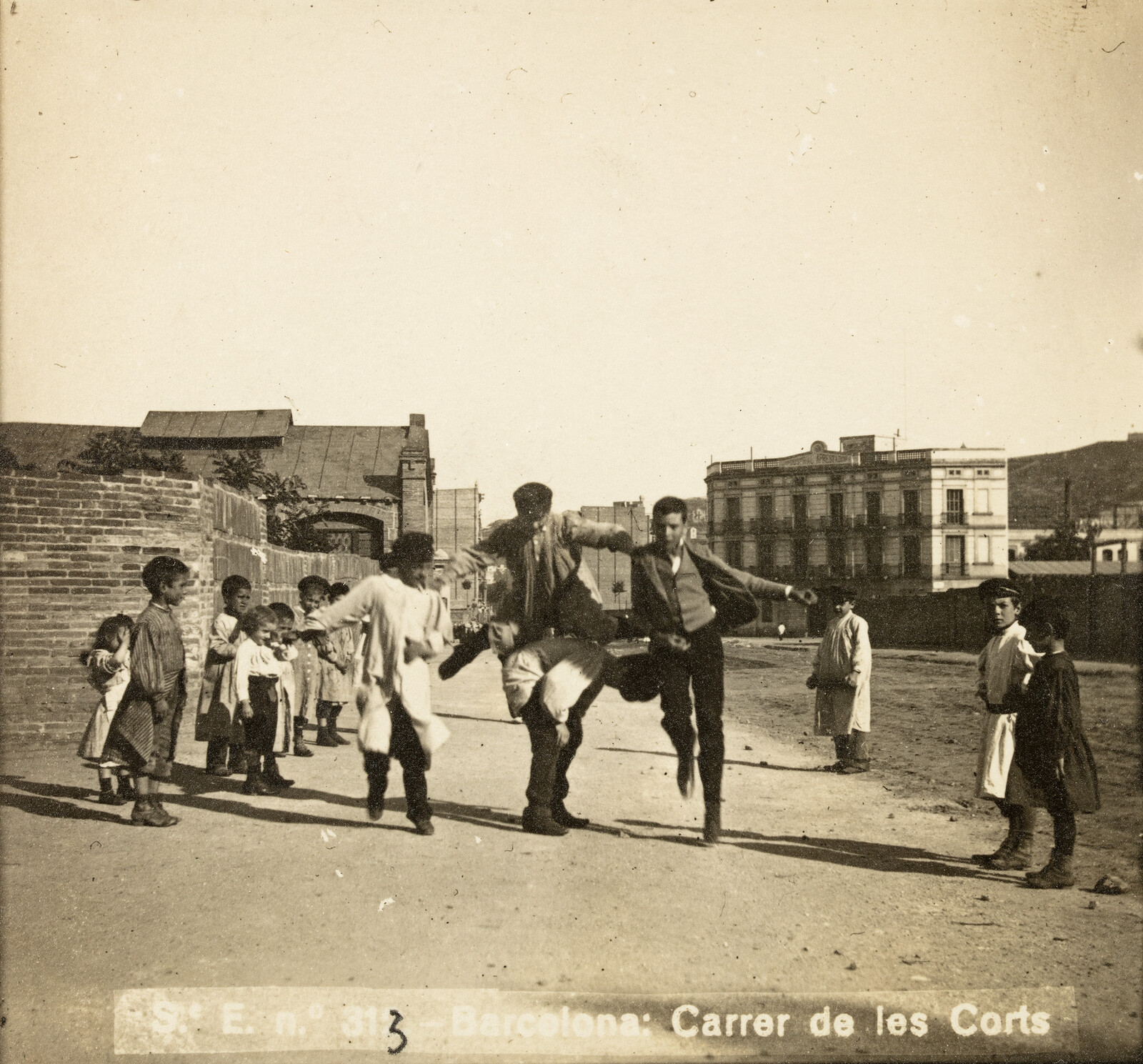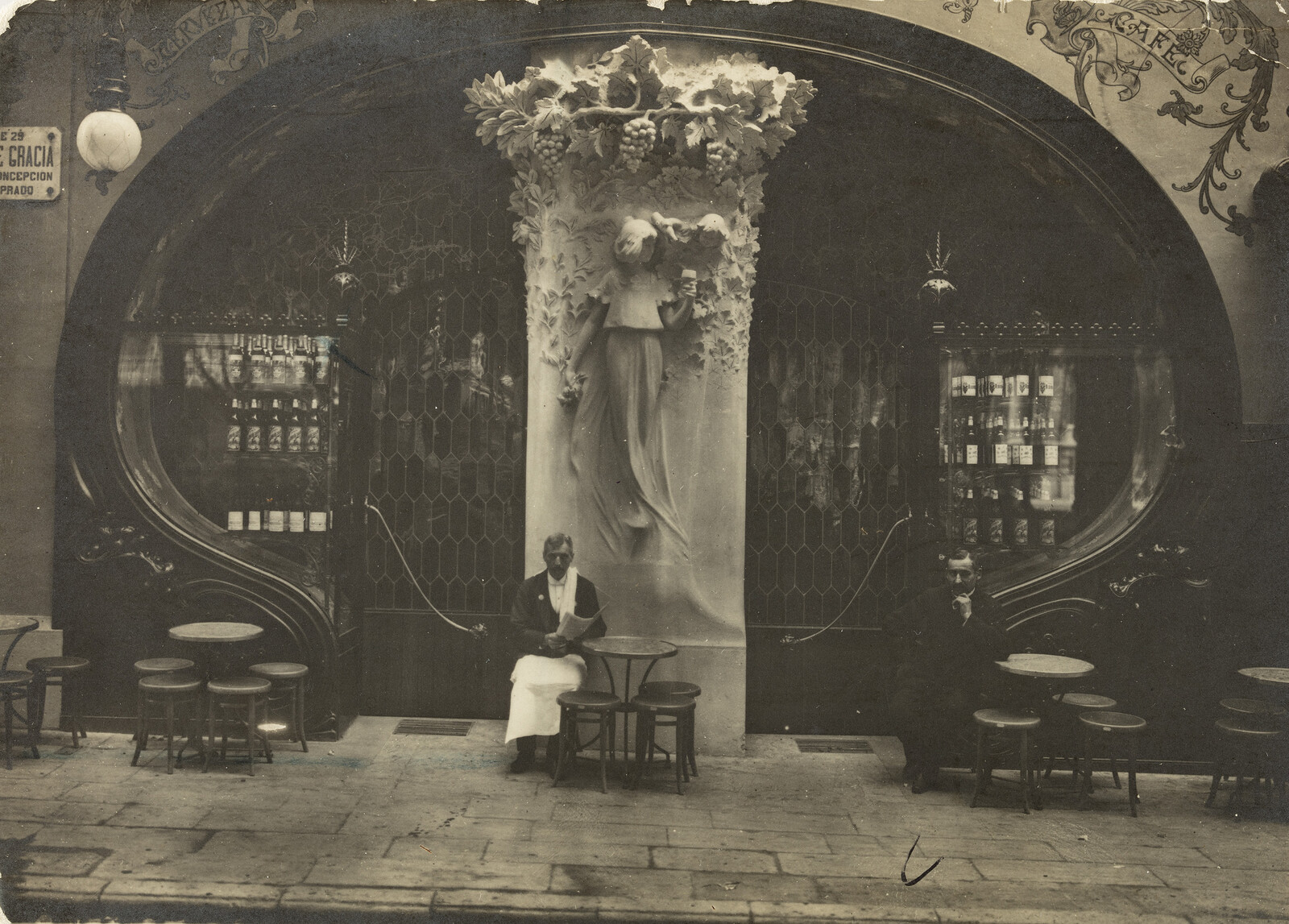The Eyes of Barcelona
February 18–May 8, 2022
Avenida del Litoral 30
08005 Barcelona
Spain
In collaboration with the Mas Archive of the Fundació Institut Amatller d’Art Hispànic, Fundación MAPFRE presents Adolf Mas: The Eyes of Barcelona, a journey through the work of this Catalan photographer, recognized for his major contribution to the field of heritage photography, and a figure of paramount importance for understanding the social transformation of Barcelona during the early 20th century.
Born in Solsona (Lleida) on September 28, 1860, Adolf Mas moved to Barcelona prior to 1890. He left his hometown and his work as a solicitor for an uncertain future in the Condal city, initially making his way in the textile industry. A few years later, he became a regular at the Els Quatre Gats café where he established contacts with the intellectuals and artists of the day. In 1901, after training as a photographer, he founded his first business selling photographic materials, a business that years later would become the “Estudi de Fotografía A. Mas” [the A. Mas Studio of Photography], the predecessor of the “Mas Archive.”
Mas became the main photographer for architects such as Josep Puig i Cadafalch, who commissioned him to photograph his buildings, as if he were compiling an inventory. He also produced a repertoire of other images, of which those of the Sagrada Familia stand out.
A pioneer of photojournalism in Catalonia, he documented a wide range of cultural and current events, as well as the new infrastructures and healthcare initiatives that were flourishing in Barcelona in the early 20th century. His commissioned portraits produced for illustrated magazines are an extraordinary testimony of the intellectual circles of the time.
From 1910 his production was centered on compiling a registry of artistic and monumental heritage, and in 1915 he received a commission to produce an iconographic repertoire of Spain. From this time on his work would focus on the administration of an impressive archival resource which was intended for public consultation; by 1936, the year of his death, it consisted of approximately 100,000 negatives.
“The photographs by Adolf Mas portray Barcelona in the midst of a socio-cultural, artistic, political, and urban transformation. The graphic narrative constructed by the photographer allows us to explore a reality that was rapidly changing, and understanding his photographic legacy is fundamental for the correct interpretation of the dynamics linked to early 20th-century Barcelona.
Adolf Mas is mainly known for the creation and consolidation of the renowned Mas Archive and for being one of the first heritage photographers in Catalonia. However, he is also a more complex photographer. His beginnings as a photojournalist ran in parallel with something akin to artistic photography, which became aparent in his portraits. These were not traditional, and brought his work closer to the artistic circles of the time. Although Mas’s production cannot be included in the movement known as pictorialism, it undoubtedly goes beyond what was being done in other contemporary photographic studios, and it is an aspect of his work that this exhibition highlights.
Over the years, many national and international exhibitions covering a wide range of topics have included works by Adolf Mas and other photographers. However, Adolf Mas. The Eyes of Barcelona is a monographic project that aims to present him in the round, as a photographer and as manager of one of the most important photographic archives in Spain.”
Adolf Mas: The Eyes of Barcelona offers a broad overview of the work of this key figure in Catalan Noucentista photography through 200 photographs and a wide range of documentary material that are divided into four thematic sections and address the main aspects of his career.
The core of the show includes the author’s photographic production centering on the city of Barcelona. Adolf Mas captured the architectural, social and cultural changes in the city through images that combine aspects of documentary recording with the aesthetic concerns of contemporary European artistic movements. Barcelona was a city of contrasts, ranging from the slums on the periphery to the mansions of the Eixample district; and from the luxurious cafés frequented by the bourgeoisie to the shanty towns built by panhandlers in the Barceloneta area.
The exhibition ends with a section dedicated to the campaigns on heritage indexing undertaken by Adolf Mas and the articulation of what has been recognized as the most important photographic archive on Spanish heritage in Europe: the Mas Archive.
Works by artists such as Ramon Casas, Alexandre de Riquer, and Eusebi Arnau produced in the context of Adolf Mas’s photographic studio business will be on display along with the author’s photographs.
The exhibition is part of the program Fundación MAPFRE has established at KBr Barcelona Photo Center in collaboration with Catalan institutions dedicated to preserving Catalonia’s rich photographic heritage. On this occasion, the exhibition has been organized in collaboration with Fundació Institut Amatller d’Art Hispànic. It has been supported by the Diputació de Barcelona. Arxiu General; the Biblioteca Nacional de Catalunya in Barcelona; the Arxiu Històric de la Ciutat de Barcelona; the Arxiu Fotogràfic de Barcelona, Barcelona City Hall; the MAE-Theater Institute; and the private collection of the Pasans Bertolin Family, who have all generously loaned their works.
Adolf Mas: The Eyes of Barcelona brings together the extraordinary visual landscape and collective memory of early 20th-century Barcelona as seen through the eyes of Adolf Mas, one of the key figures in the history of modern photography in Spain.



